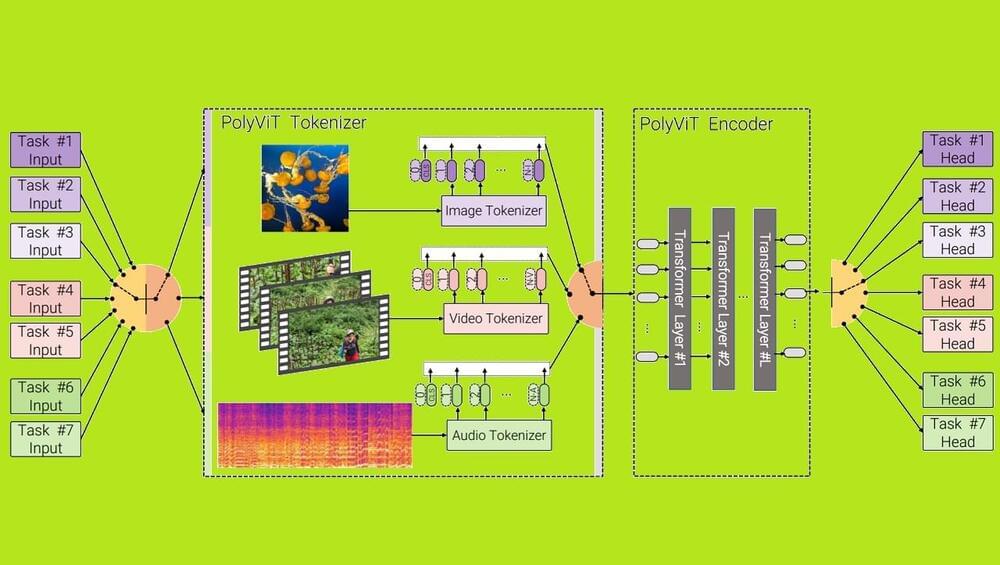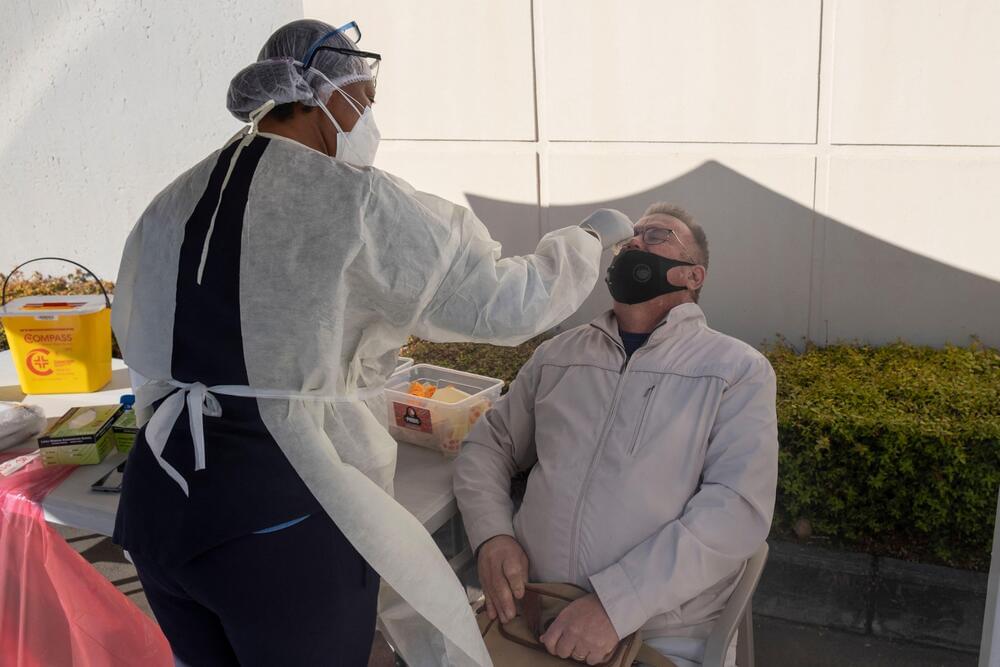AI doesn’t actually multitask very well because typical algorithms aren’t very versatile. But a new project from Google could change that.



Tesla’s head of AI has released new footage of the automaker’s auto labeling tool for its self-driving effort.
It’s expected to be an important accelerator in improving Tesla’s Full Self-Driving Beta.
Tesla is often said to have a massive lead in self-driving data thanks to having equipped all its cars with sensors early on and collecting real-world data from a fleet that now includes over a million vehicles.


Light is an electromagnetic wave: It consists of oscillating electric and magnetic fields propagating through space. Every wave is characterized by its frequency, which refers to the number of oscillations per second, measured in Hertz (Hz). Our eyes can detect frequencies between 400 and 750 trillion Hz (or terahertz, THz), which define the visible spectrum. Light sensors in cell phone cameras can detect frequencies down to 300 THz, while detectors used for internet connections through optical fibers are sensitive to around 200 THz.
At lower frequencies, the energy transported by light isn’t enough to trigger photoreceptors in our eyes and in many other sensors, which is a problem given that there is rich information available at frequencies below 100 THz, the mid-and far–infrared spectrum. For example, a body with surface temperature of 20°C emits infrared light up to 10 THz, which can be “seen” with thermal imaging. Also, chemical and biological substances feature distinct absorption bands in the mid-infrared, meaning that we can identify them remotely and non-destructively by infrared spectroscopy, which has myriads of applications.

ONE YEAR AGO Google artificial intelligence researcher Timnit Gebru tweeted, “I was fired” and ignited a controversy over the freedom of employees to question the impact of their company’s technology. Thursday, she launched a new research institute to ask questions about responsible use of artificial intelligence that Gebru says Google and other tech companies won’t.
“Instead of fighting from the inside, I want to show a model for an independent institution with a different set of incentive structures,” says Gebru, who is founder and executive director of Distributed Artificial Intelligence Research (DAIR). The first part of the name is a reference to her aim to be more inclusive than most AI labs—which skew white, Western, and male —and to recruit people from parts of the world rarely represented in the tech industry.
Gebru was ejected from Google after clashing with bosses over a research paper urging caution with new text-processing technology enthusiastically adopted by Google and other tech companies. Google has said she resigned and was not fired, but acknowledged that it later fired Margaret Mitchell, another researcher who with Gebru co-led a team researching ethical AI. The company placed new checks on the topics its researchers can explore. Google spokesperson Jason Freidenfelds declined to comment but directed WIRED to a recent report on the company’s work on AI governance, which said Google has published more than 500 papers on “responsible innovation” since 2018.

U.S. health officials on Wednesday reported the country’s first case of the Omicron variant of the coronavirus, in a person in California.
The Covid-19 case was identified by the California and San Francisco health departments in a person who had traveled to South Africa and returned on Nov. 22, the Centers for Disease Control and Prevention said in a release. The individual, who was fully vaccinated with the Moderna shot but had not received a booster, had mild symptoms and has since recovered, federal and local officials said. The person has been isolating since testing positive on Nov. 29. All close contacts have tested negative thus far.
The discovery of Omicron in the United States is not a surprise. Upon characterizing the mutations in the variant, scientists in South Africa last week quickly raised the world’s alarms about the potential threat it posed, but it had already started to circulate silently. Some two dozen countries, from the United Kingdom to Australia to Israel, have already reported cases, many in travelers.


People and companies are betting on life becoming more digitized and the much-hyped, little-understood metaverse taking off; virtual land is becoming as much of an investment as physical land, and if current trends continue, may stand to give early adopters a huge payout. Metaverse Group chose its plot of land very intentionally, and knows exactly what use it will be put to; located in Decentraland’s Fashion Street district, the space will be used “to facilitate fashion shows and commerce within the exploding digital fashion industry.”
Let’s back up a bit. Decentraland is a decentralized virtual world built on the Ethereum blockchain, with “decentralized” obviously being the key word and the platform’s big differentiator. “The people who use Decentraland own Decentraland,” Dave Carr, communications lead for the platform, told Euronews Next. “We have a decentralized autonomous organization in which people can submit proposals and vote on proposals submitted by others. And this effectively determines the future direction of Decentraland.”
Facebook, now Meta, aims to rule the metaverse of the future, but it seems likely that people will gravitate towards platforms like Decentraland precisely because they’re not owned or controlled by a centralized authority. Facebook hasn’t done a great job of earning its users’ trust, and it could take a long time for the company to turn consumer sentiment around. Meanwhile, Decentraland’s emphasis on autonomy and the lack of a single powerful decision-maker may be just what virtual world enthusiasts are looking for.
Go to https://NordVPN.com/sabine to get a 2-year plan plus 4 additional months with a huge discount!
At 2 mins 26 seconds when I say “Peter” I meant “Paul”. Sorry!
Dark energy has got something to do with quantum vacuum fluctuation, whoa, physics. You have probably heard something like that. Alas, that isn’t quite right. In this video I clear up the confusion. Vacuum energy is much easier to understand than you might have been told. And it doesn’t fluctuate.
You can support us on Patreon: https://www.patreon.com/Sabine.
0:00 Intro.
0:27 Vacuum Energy according to Scientific American.
2:07 Vacuum Energy according to Sabine.
7:11 The Gas Analogy for Dark Energy.
10:04 Sponsor Message.
#physics #science
Here’s a quick reminder that one of the expected results of the current pandemic is the slow, controlled, but inevitable destruction of the Canadian economy as government assets are secretly pulled out of circulation and redistributed to international bankers and their wealthiest clients.
Prime Minister Justin Trudeau’s Liberal government is asking Parliament to approve billions in new spending during a brief four-week sitting in Ottawa, but is facing questions because it has not released a full accounting of how it spent more than $600Bln last year.